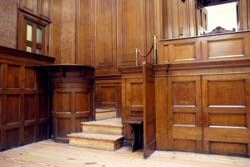 Challenging unhelpful negative thoughts is a skill. These thoughts are not facts, and by challenging them we can differentiate between what is real and what is distorted emotional interpretation. When we temper and control the emotional black-and-white thinking, which comes from an agitated emotional brain, we can better access our thinking rational brain (our higher intelligence) and see things with a far clearer perspective. This is good emotional intelligence, not least because it is fair, realistic and balanced.
Challenging unhelpful negative thoughts is a skill. These thoughts are not facts, and by challenging them we can differentiate between what is real and what is distorted emotional interpretation. When we temper and control the emotional black-and-white thinking, which comes from an agitated emotional brain, we can better access our thinking rational brain (our higher intelligence) and see things with a far clearer perspective. This is good emotional intelligence, not least because it is fair, realistic and balanced.
There are various methods we can use to be ever better skilled at challenging unhelpful negative thoughts. Of course different methods work better for different people. One particularly popular method (and this is not just for litigators!) is to summon the thought to court as a witness for the prosecution and to put it through its paces. This is a discrete court process, specifically the careful and thorough examination and cross-examination of the evidence on a particular matter of fact – in this case whether or not the negative thought is an accurate, balanced reflection of reality.
The most important aspect of this exercise is that Counsel for the defence will conduct a highly professional, carefully thought through and vigorous defence, bringing his own witnesses and making a compelling case for the defence.
Your highest intelligence is the judge. You are impartial and your job is simply calmly and attentively to listen to and weigh up the evidence before reaching your decision.
Here is how it works:
- After opening submissions, the negative thought is called as a witness for the prosecution and takes the stand. This witness has the gall to take the oath. The essence of the prosecution’s position is, let’s say as an example, that you have never and will never give a successful presentation.
- The negative thought witness is a godsend to the prosecuting Counsel. The witness is black and white and all or nothing by way of evidence. He states, amongst other things, how another presentation you gave in the past was hopeless. Prosecuting Counsel looks very pleased with himself but, not content with what the witness has already said, he continues to embellish the account of the witness. He uses hearsay, assumptions, mind reading and leads the witness. Whilst he makes an impassioned and damning case on a highly emotional level, there is little detail really in support. Everyone feels rather drained, hearing what seems to be the same thing over and over again. Thankfully Counsel then sits down.
- Now for the Counsel for the defence. He is good at this. He is interested in facts and specifics. What factual evidence precisely is there to corroborate the account of the negative thought witness? When the witness said that the presentation in the past was hopeless, what aspect of that presentation precisely did not go well? Having established that this assertion was based on the fact that a few words were fluffed in the middle (which according to other witnesses for the defence had not really been noticed by anyone), what else supported that assertion? Silence, but then the witness said triumphantly that the slides failed. Then Counsel then asked how that came about. Did anyone or anything else contribute to what happened with the slides? Other witnesses confirmed that this was an IT issue which was quickly fixed and that you continued speaking well and on point, referring to the hard copy slides on the handout while IT fixed it. Counsel for the defence then calls witnesses who confirm that the feedback from that and other presentations was good and that having been on presentation training since you had learned various techniques to keep nerves at bay, etc.
- After closing submissions, the judge (your highest intelligence) sums up. This is fair, realistic and balanced. Reframing the negative thought, the judge decides that although you felt nervous about giving the next presentation the evidence supports the fact that you have presented well in the past, overcome difficulties and learned new skills. The judge decides further that the prospects of a successful presentation next time are good.

